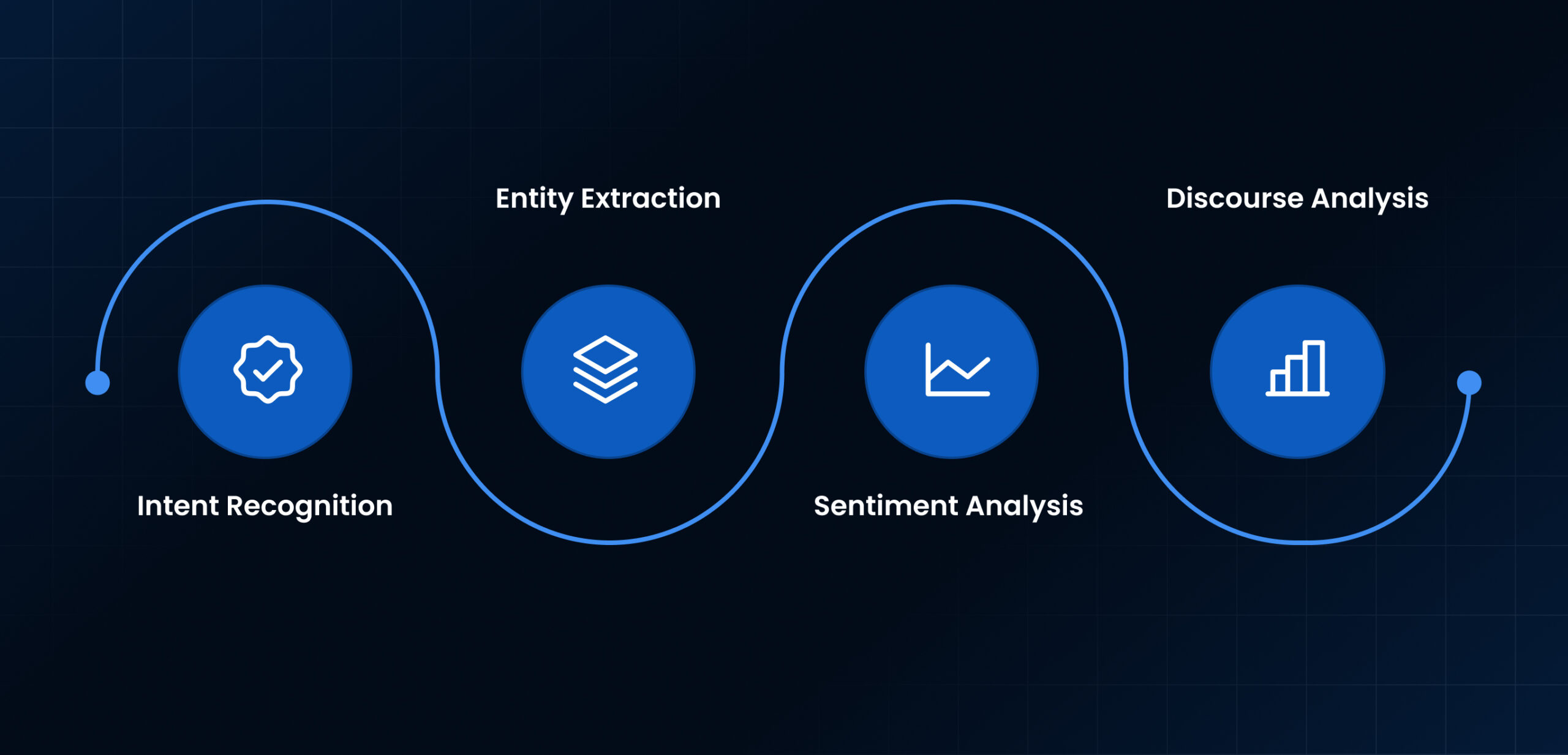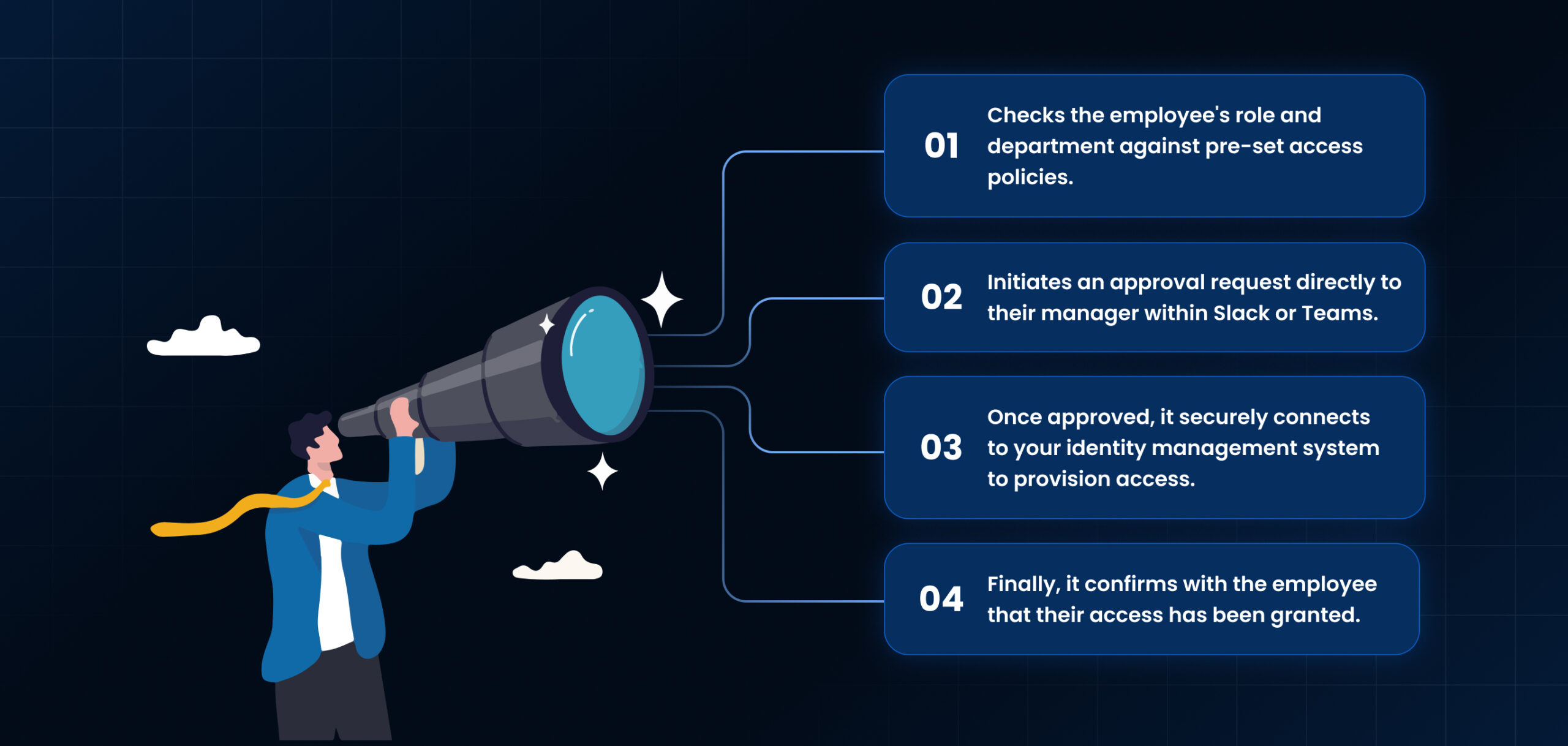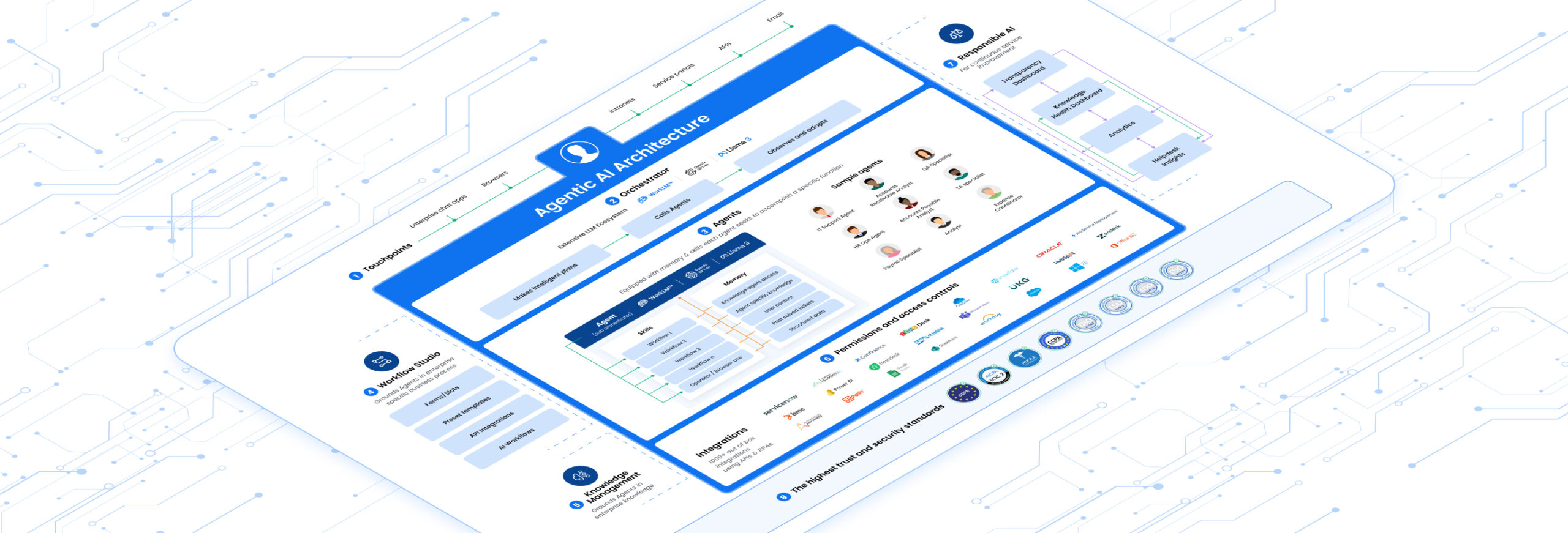Introduction
An employee in your Chicago office Slacks the IT help desk: “My laptop is acting weird and I can’t get into the sales forecast spreadsheet for the big meeting this afternoon.” Is this a hardware issue, a software access problem, or both? In the past, a human had to read this, figure it out, and create a ticket. Today, the right technology can understand the entire request instantly. This is the power of natural language understanding. It’s the engine that’s transforming enterprise support from a slow, manual process into an intelligent, autonomous experience.
For technology leaders, natural language understanding is no longer a futuristic concept; it’s a core competency for building a modern, efficient, and employee-centric organization. This guide will break down what it is, how it works, and why it’s the key to unlocking the next generation of productivity in your company.
Exploring the Core of Natural Language Understanding
At its heart, natural language understanding is about bridging the gap between how people talk and how computers process information. It’s the science of teaching a machine to comprehend the nuances, context, and intent behind human language.
What Is NLU?
Think of natural language understanding as a sophisticated universal translator. But instead of translating between Spanish and English, it translates between messy, informal human language and the structured, logical language of computers. When an employee says, “I need access to the Q3 marketing drive,” NLU doesn’t just see a string of words. It deciphers the core intent (to gain access) and identifies the key entity (the Q3 marketing drive). This ability to extract meaning is what separates a simple keyword-matching bot from a truly intelligent virtual assistant. It allows software to grasp context, making interactions feel more natural and leading to far more accurate outcomes.
The Engine Behind Modern AI: Natural Language Understanding
Conversational AI is everywhere, but its effectiveness hinges entirely on the quality of its NLU . A chatbot without solid NLU is like a call center agent who can’t understand what you’re saying.
How NLU Powers Conversational AI and Chatbots
Conversational AI and chatbots are the user-facing applications, like the voice or text window you interact with. Natural language understanding is the “brain” working behind the scenes. When a user types a request, the NLU model gets to work.
First, it breaks down the sentence to understand its grammatical structure. Then, it identifies the user’s ultimate goal, or intent. For example, in “My Outlook is frozen,” the intent is to troubleshoot a software issue. Finally, it extracts the critical pieces of information, or entities, like “Outlook.” Once the NLU has successfully deciphered the “what” and the “why” of the request, it can then pass that structured information to another part of the system to formulate a response or trigger an automated workflow. Without this crucial comprehension step, any chatbot would be limited to answering only the most basic, pre-programmed questions.
Inside the Technology of Natural Language Understanding
To appreciate its power, it helps to look under the hood. A modern natural language understanding system is a sophisticated combination of several key technologies working in concert.
Key Components of an NLU System

While the field is incredibly complex, the core functions of an enterprise-grade NLU system can be broken down into a few key components:
- Intent Recognition: This is the system’s ability to determine the user’s primary goal. Whether a user says, “I can’t log in,” “Reset my password,” or “I’m locked out,” the NLU recognizes that the underlying intent is password_reset. This is fundamental for routing the request correctly.
- Entity Extraction: After identifying the intent, the system needs to pull out the specific details. In a request like, “Book me a flight to Denver for next Tuesday,” the entities are Denver (location) and next Tuesday (date). Extracting these entities is crucial for taking action.
- Sentiment Analysis: This component gauges the emotional tone of the user’s language. It can distinguish between a frustrated message (“This VPN is a disaster!”) and a neutral one (“How do I connect to the VPN?”). This helps prioritize urgent issues and provides valuable feedback on employee satisfaction.
- Discourse Analysis: This allows the system to understand conversations with multiple turns. If you ask, “What’s the status of my ticket?” and the system replies, “Which one?”, your response of “The one about my laptop” is understood in the context of the previous exchange.
The Human Element in Natural Language Understanding
While technology has made incredible leaps, achieving perfect, human-level natural language understanding remains a significant challenge. Language is inherently complex and often wonderfully illogical.
Challenges in Achieving Human-Level Language Comprehension
The hurdles NLU systems must overcome are the very things that make human language so rich. Ambiguity is a major one; the word “run” can mean vastly different things in “I’m going for a run,” “The program won’t run,” and “There’s a run in my stocking.” Similarly, sarcasm and irony are difficult for machines to detect, as the literal meaning of the words is the opposite of the intended message. Furthermore, different departments within the same company often use unique jargon and acronyms. A robust natural language understanding model must be trained on this specific vocabulary to be effective. Overcoming these challenges is what separates a truly helpful AI from a frustrating one.
Leena AI’s Approach to Natural Language Understanding
At Leena AI, we believe the goal of natural language understanding isn’t just to comprehend a request, but to resolve it autonomously. We’ve built our platform around this core principle, moving beyond simple chatbots to create true digital team members.
How Leena AI Utilizes NLU for Enhanced HR and IT Operations
We’ve pioneered the use of “Agentic AI,” which leverages our advanced natural language understanding to power autonomous actions. When an employee asks our AI agent, “I need access to our Tableau server for the Project Titan dashboard,” our NLU doesn’t just create a ticket.

Instead, it initiates a multi-step, autonomous workflow. It understands the user, the software requested (“Tableau”), and the specific resource (“Project Titan dashboard”). The agent then:
- Checks the employee’s role and department against pre-set access policies.
- Initiates an approval request directly to their manager within Slack or Teams.
- Once approved, it securely connects to your identity management system to provision access.
- Finally, it confirms with the employee that their access has been granted.
This entire process happens in minutes, 24/7, without a single human touch. This is the tangible business value of a sophisticated natural language understanding engine; it doesn’t just file the problem, it solves it.
The Horizon of Natural Language Understanding
The field of natural language understanding is evolving at a breakneck pace. For enterprise leaders, staying ahead of these trends is key to building a future-proof technology strategy.
The Future of NLU: Trends and Innovations
Looking toward the immediate future, several innovations are set to redefine what’s possible. The rise of Large Language Models (LLMs) has dramatically improved the fluency and contextual awareness of NLU systems. Instead of being limited to narrow tasks, these models can handle a much wider range of conversational topics.
A critical trend for enterprises is the use of Retrieval-Augmented Generation (RAG). This technique allows an LLM to access your company’s internal, real-time information, like knowledge base articles or policy documents, to provide answers that are both conversationally fluent and grounded in factual, company-specific data. This eliminates the risk of the AI “hallucinating” incorrect information.
Finally, the future of natural language understanding is proactive. Systems will move beyond simply answering questions to predicting needs, analyzing support trends to identify systemic issues and alerting leadership before they become widespread problems.
From Understanding to Action
Ultimately, the goal of natural language understanding in the enterprise is to eliminate friction. It’s about turning complex, frustrating processes into simple, satisfying conversations. By enabling machines to truly comprehend and act on our requests, we unlock a new level of efficiency and create a work environment where employees can focus on what they do best.
Frequently Asked Questions about Natural Language Understanding
1. What is the difference between NLU and Natural Language Processing (NLP)?
Natural Language Processing (NLP) is the broader field of enabling computers to work with human language. Natural language understanding is a specific, crucial subfield of NLP that focuses on the “comprehension” part, determining the meaning and intent behind the words.
2. How does natural language understanding benefit a large company?
For a large enterprise, natural language understanding provides massive scalability for support functions. It enables 24/7, instant resolution for common employee requests in IT, HR, and other departments, which boosts productivity, cuts operational costs, and improves the overall employee experience.
3. Is it difficult to implement an NLU-powered system?
While the underlying technology is complex, modern platforms like Leena AI are designed for seamless integration. A good natural language understanding solution should work as an intelligent layer on top of your existing systems of record (like ServiceNow or Workday), minimizing disruption and accelerating time-to-value.
4. How does an NLU system learn a company's specific jargon?
Effective enterprise NLU systems are trained on your company’s specific data. This can be done by feeding it examples from past support tickets, internal knowledge bases, and policy documents, allowing the natural language understanding model to learn the unique vocabulary and context of your business.
5. Can natural language understanding handle requests in multiple languages?
Yes, modern natural language understanding models are multilingual. They can be trained to comprehend and respond to employee requests in numerous languages, which is essential for global companies looking to provide a consistent support experience for their entire workforce.













